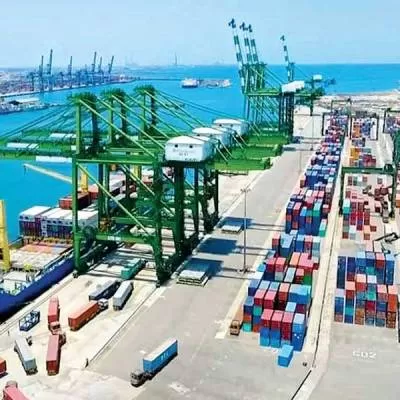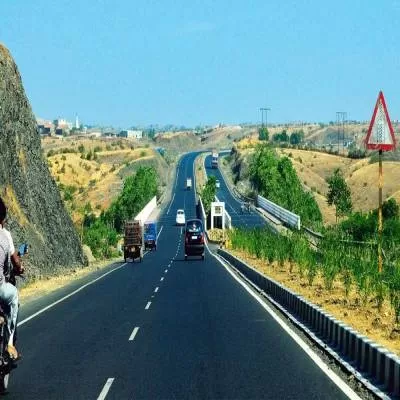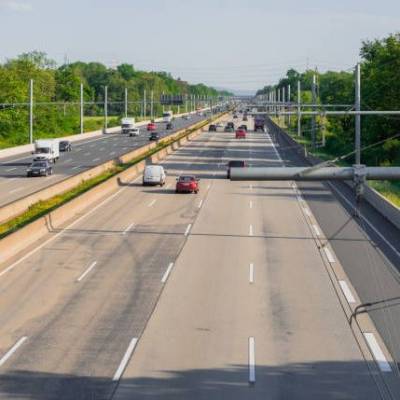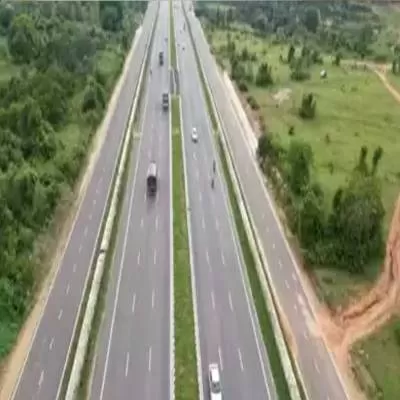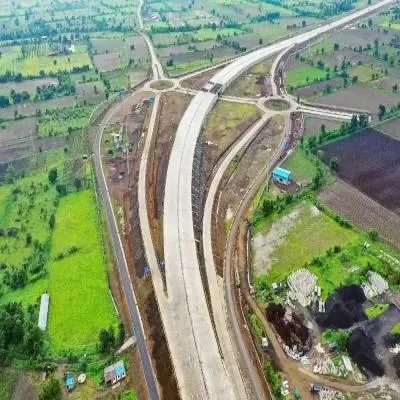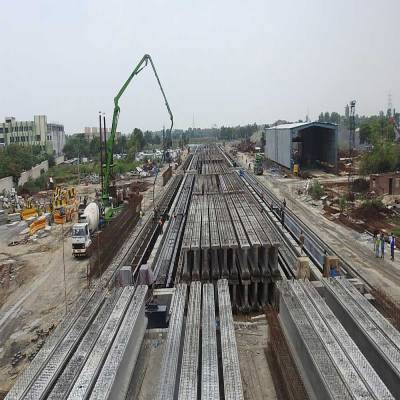- Home
- Infrastructure Transport
- ROADS & HIGHWAYS
- About 53 per cent of awarded projects in FY2017 made through HAM as compared to 8 per cent in FY2016
About 53 per cent of awarded projects in FY2017 made through HAM as compared to 8 per cent in FY2016
The Hybrid Annuity Model (HAM) garnered a favourable response from both the EPC and the BOT players with intense competition till January 2017. HAM has become the most preferred mode of awarding projects by the NHAI now – around 53 per cent of the awards in FY2017 were made through the HAM route when compared to 8 per cent in FY2016. This is likely to increase further in FY2018. Till March 2017, a total of 43 projects, covering 2,641 km, were awarded through the HAM (34 in FY2017 and nine in Q4 FY2016) route.
Shubham Jain, Vice President & Sector Head, Corporate Ratings, says: “ICRA’s study[1] on HAM bids suggests that the bids till January 2017 were aggressive with almost 67 per cent of the projects awarded by the NHAI were quoted at a discount to the base price, with some HAM projects being awarded for as low as 65-71 per cent of NHAI’s bid project cost (BPC). The number of bidders for these projects ranged between three to ten. However, the bid competitive intensity moderated during February-March, 2017 with all projects awarded at a premium during this period.”

After initial teething problems with modest participation (average of three bids for the first few projects) during January-March 2016, the NHAI’s aggressive promotions, through awareness campaigns to lenders and developers, witnessed some improvement in participation levels. Post June 2016, the bids witnessed good participation (as high as 9-10 bidders per project). In terms of competitive intensity, the engineering, procurement and construction (EPC) mode continues to remain extremely competitive with a large number of bidders quoting at a substantial discount to the NHAI’s base price. While the BOT (HAM) projects witnessed moderate competitive intensity, the BOT (Toll) has the lowest competitive intensity. At the aggregate level, the top five bidders together won 22 projects, totalling around 1,367 km (52 per cent), for an awarded cost of Rs.203.80 billion at a discount of around 4 per cent to the NHAI's base cost of Rs 212.88 billion.
The first six months post HAM’s launch saw relatively low (between 3-7) number of participants with aggressive bids – 70 per cent of total awards were at a discount. Subsequently, the numbers of bidders increased with some moderation in aggression; between July 2016 to January 2017, there was a good mix of premium and discounted bids with 43 per cent of awards at a discount. The bid competitive intensity further moderated during February-March, 2017 where in all projects were awarded at a premium during this period.
With the Indian road sector long being affected by execution delays, project cancellations, stuck projects, a wide variation in actual and projected traffic volumes etc, lenders’ confidence levels were at an all-time low at the time of the HAM launch. Although the letter of awards (LoAs) was signed in January 2016, the first financial closure under this model could be achieved only in September 2016 due to the initial inhibitions of lenders.
Jain adds: “Given the low equity requirement for HAM, lenders are concerned about the developers’ commitment till the end of the concession period, especially given that many of the developers have limited experience in development space (many Tier-II developers have won HAM projects). Assuming the debt-to-equity ratio of 75:25, the developer’s equity requirement is just 15 per cent of the total project cost as 40 per cent of the cost will be reimbursed by the NHAI during the construction phase itself and in case EPC works are executed in-house, the net equity adjusted for EPC profits is even lower, resulting in not much of skin in the game for the developers. As a result, three HAM projects have been cancelled till date owing to the developers’ inability to achieve financial closure within stipulated timelines.”
[1] Based on the ICRA sample study of 43 projects covering 2,641 km awarded by NHAI till March 2017.
Two in three HAM projects awarded by NHAI till January 2017 were at a discount to the base price; low skin in the game remains a key concern for lenders: ICRA. The Hybrid Annuity Model (HAM) garnered a favourable response from both the EPC and the BOT players with intense competition till January 2017. HAM has become the most preferred mode of awarding projects by the NHAI now – around 53 per cent of the awards in FY2017 were made through the HAM route when compared to 8 per cent in FY2016. This is likely to increase further in FY2018. Till March 2017, a total of 43 projects, covering 2,641 km, were awarded through the HAM (34 in FY2017 and nine in Q4 FY2016) route. Shubham Jain, Vice President & Sector Head, Corporate Ratings, says: “ICRA’s study[1] on HAM bids suggests that the bids till January 2017 were aggressive with almost 67 per cent of the projects awarded by the NHAI were quoted at a discount to the base price, with some HAM projects being awarded for as low as 65-71 per cent of NHAI’s bid project cost (BPC). The number of bidders for these projects ranged between three to ten. However, the bid competitive intensity moderated during February-March, 2017 with all projects awarded at a premium during this period.” After initial teething problems with modest participation (average of three bids for the first few projects) during January-March 2016, the NHAI’s aggressive promotions, through awareness campaigns to lenders and developers, witnessed some improvement in participation levels. Post June 2016, the bids witnessed good participation (as high as 9-10 bidders per project). In terms of competitive intensity, the engineering, procurement and construction (EPC) mode continues to remain extremely competitive with a large number of bidders quoting at a substantial discount to the NHAI’s base price. While the BOT (HAM) projects witnessed moderate competitive intensity, the BOT (Toll) has the lowest competitive intensity. At the aggregate level, the top five bidders together won 22 projects, totalling around 1,367 km (52 per cent), for an awarded cost of Rs.203.80 billion at a discount of around 4 per cent to the NHAI's base cost of Rs 212.88 billion. The first six months post HAM’s launch saw relatively low (between 3-7) number of participants with aggressive bids – 70 per cent of total awards were at a discount. Subsequently, the numbers of bidders increased with some moderation in aggression; between July 2016 to January 2017, there was a good mix of premium and discounted bids with 43 per cent of awards at a discount. The bid competitive intensity further moderated during February-March, 2017 where in all projects were awarded at a premium during this period. With the Indian road sector long being affected by execution delays, project cancellations, stuck projects, a wide variation in actual and projected traffic volumes etc, lenders’ confidence levels were at an all-time low at the time of the HAM launch. Although the letter of awards (LoAs) was signed in January 2016, the first financial closure under this model could be achieved only in September 2016 due to the initial inhibitions of lenders. Jain adds: “Given the low equity requirement for HAM, lenders are concerned about the developers’ commitment till the end of the concession period, especially given that many of the developers have limited experience in development space (many Tier-II developers have won HAM projects). Assuming the debt-to-equity ratio of 75:25, the developer’s equity requirement is just 15 per cent of the total project cost as 40 per cent of the cost will be reimbursed by the NHAI during the construction phase itself and in case EPC works are executed in-house, the net equity adjusted for EPC profits is even lower, resulting in not much of skin in the game for the developers. As a result, three HAM projects have been cancelled till date owing to the developers’ inability to achieve financial closure within stipulated timelines.” [1] Based on the ICRA sample study of 43 projects covering 2,641 km awarded by NHAI till March 2017.


